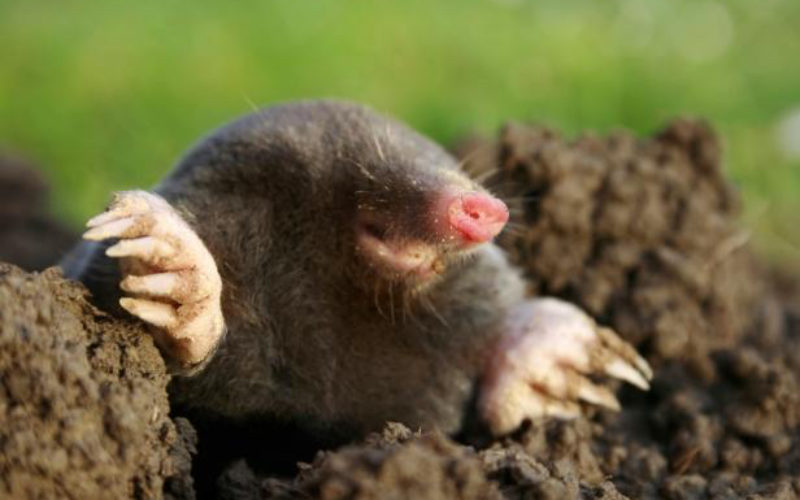Moles more boon than bane in most yards
AMANDA BANCROFT
Making Ripples
Northwest Arkansas can boast (or bemoan) several species of moles, voles and shrews. Of these, you’re most likely to have eastern moles digging up your yard. We have these excavation experts aerating the muddy soil of our driveway. It looks like a nice, neatly done cul-de-sac running across the tire tracks. Despite being smooshed by the car driving over it twice daily, the moles persist. We could learn something from them about persistence. But most people want to learn how to eradicate them, especially when they can dig surface runs at a speed of 10 to 20 feet per hour!
“Of all common mammals in North America, perhaps the mole is least understood,” writes Professor Rebecca McPeake in the University of Arkansas Extension’s PDF guide titled “Controlling the Eastern Mole.” Moles are tiny, sure, but they’re not rodents. They are insectivores and feed on invertebrates like earthworms, beetle larvae, snails, slugs, centipedes and various ant species. Mole saliva paralyzes earthworms that can be stored alive to eat later. Larders can contain 1,000 earthworms! A study found that moles eat 52 different kinds of food. They can eat up to 100 percent of their body weight each day. Vegetation occasionally interests them as bedding, but they don’t consume it.
Mole fur is velvety soft, and their eyes are hidden under it. Their eyesight is very poor, since they have adapted to life beneath the soil where other senses lead the way. They’re active at all times of the day and night but tend to be most active at dawn and dusk. They can withstand higher levels of carbon dioxide than other mammals, and use oxygen more efficiently through the recycling of exhaled air in their burrows. Surface runs provide ventilation, while deep runs go from six to 20 inches below ground for foraging and protection. They can live in a variety of habitats, from forest to field, gardens and golf courses.
In Arkansas, moles breed in mid-February. Females give birth in the spring to two to five blind, naked young. They mature rapidly and leave the nest after about a month. Even though moles can be long-lived, most don’t live beyond three years. When they venture up to the surface, they can be preyed upon by owls, hawks or even cats.
Their agricultural value is a mixed bag, but believe it or not, they are one of the most valuable animals to have. They aerate the soil and encourage healthy roots, despite causing some damage to plants as they dig. By eliminating many insects, they keep pest populations in check in the garden. Their tunnels and burrows create habitat for other animals, such as voles and snakes.
If you truly can’t tolerate the moles in your yard, here are a few things which might help. By not fertilizing and watering the lawn as frequently, moles will have less food available due to lower biomass in the soil. Avoid folk remedies like chewing gum – moles don’t chew gum, of course! They’re excellent swimmers, so flooding tunnels will just make the soil more moist and easier to dig. It’s illegal to use toxic baits or to gas moles, and ineffective to boot. They don’t have the right teeth to chew poison peanuts, and they can detect the gas and plug up their tunnels, or wait for the fumes to dissipate because they’re adapted to living in low oxygen environments. Physical barriers are unlikely to succeed because moles can dig deep. Lethal traps have mixed results depending on cost and effectiveness, but hopefully you can try humane traps placed in tunnels first. Lawn rollers can be used to reconnect grass roots with soil once the moles are relocated. In late spring, you might save your effort and wait awhile to see where the juveniles settle down as they explore our world. They could just be passing through.
Amanda Bancroft is a writer, artist, and naturalist living in an off-grid tiny house on Kessler Mountain. She and her husband Ryan blog about their adventures and offer tips to those wanting to make a difference at www.MakeRipples.org.










